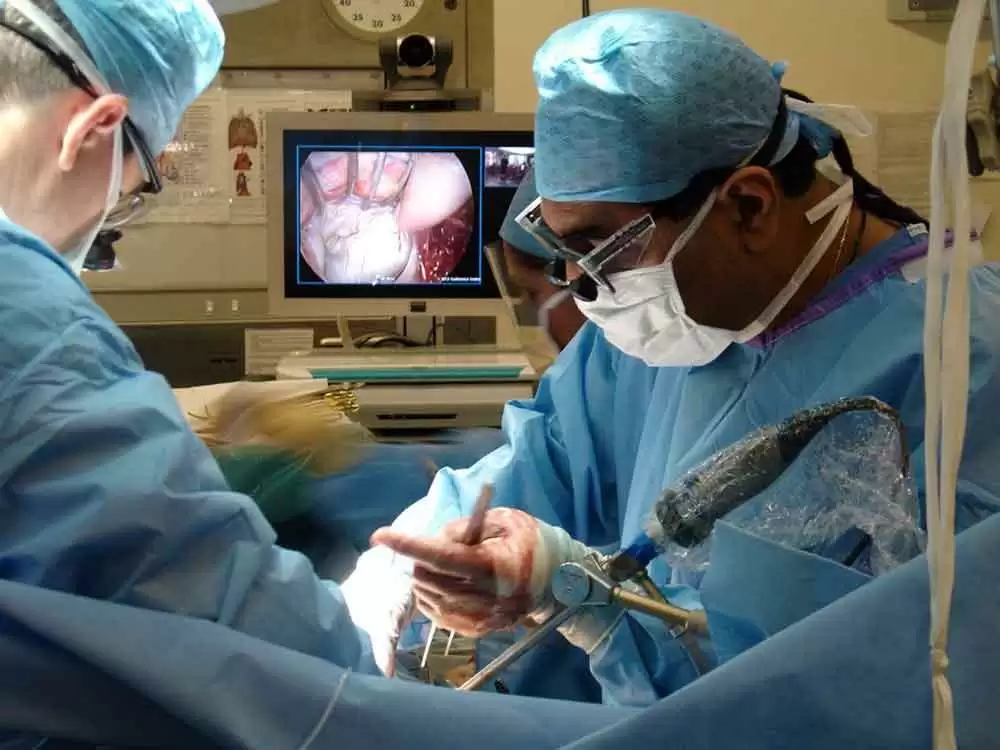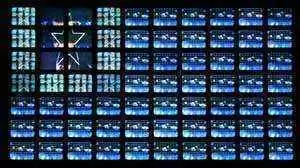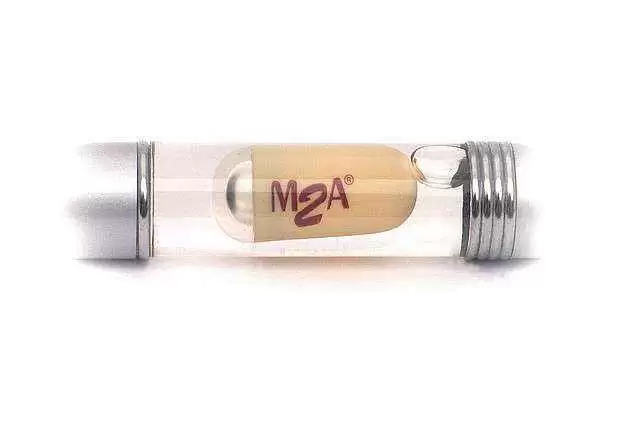
Celiac.com 08/30/2018 - Celiac disease is a disorder characterized by a clinical syndrome of intestinal malabsorption and a characteristic though not specific histological lesion consisting in total, subtotal or partial small-bowel villous atrophy (predominating in the proximal segments). A correct gluten-free diet results in clinical and histological improvement(1,2). It has become increasingly apparent that the prevalence of celiac disease is higher than previously thought, and that this is mainly because of increasing awareness of atypical, mildly symptomatic, or silent cases(3). Therefore, many patients have upper gastrointestinal endoscopy as an initial investigation, which provides an opportunity to perform a biopsy in the second portion of the duodenum.
The role of endoscopy in diagnosing celiac disease
It has long been known that celiac disease can produce changes in the appearance of small intestine on barium contrast radiographs, one such change being so-called “loss” of duodenal folds. However, over the last two decades it has been recognized that a number of changes in the duodenum clearly associated with celiac disease can be identified endoscopically. Because it is now understood that the manifestations of celiac disease are wide and variable, and that the disease is more common than recognized in the past, the clinical significance of these endoscopic observations has been greatly amplified. Awareness of these endoscopic features may alert the endoscopist to the presence of celiac disease and the need for duodenal biopsies in patients undergoing endoscopy for symptoms unrelated to the disease as well as those with vague, non-specific manifestations.
Celiac.com Sponsor (A12):
The endoscopic features in the duodenum that are well-established as markers for celiac disease include: loss of folds; scalloping of folds; mucosal mosaic pattern; whilst less commonly described findings include a visible vascular pattern and micronodularity in the duodenal bulb.
1. Loss of folds
“Loss” of folds is defined as an obvious reduction in height or number of folds in the second portion when viewed with maximal air insufflation. The sensitivity and specificity of this marker range from 73 to 88% and from 83 to 97% respectively (4,5).
2. Scalloping of duodenal folds
Scalloping occurs when multiple grooves run over the apex of a duodenal fold. Grooves in the mucosa between folds have also associated with celiac disease and likely a manifestation of the same process that leads to scalloping. The sensitivity and specificity of this marker are 88% and 87% respectively (6,7).
3. Mucosal mosaic pattern
Mucosal mosaic pattern may be recognized both in the duodenal bulb and in the second portion of the duodenum, and its assessment may be easily performed by chromoendoscopy. Unfortunately, the sensitivity of this marker is quite low (57%) (8).
4. Micronodularity in duodenal bulb
This marker is quite frequent in childhood and adolescent patients, but it can be also recognized in young adults 9-11.
5. Visible vascular pattern
This marker describes a prominence of underlying duodenal blood vessels in patients with celiac disease. Unfortunately, this is the least sensitive endoscopic marker in all studies in which it was specifically evaluated (6,12,13).
All these markers are helpful in recognising celiac disease. Moreover, in some cases specific endoscopic features can be associated with specific histological damage and may be associated with the clinical form of the disease. We found in fact that endoscopic appearance of the duodenum may be predictive of histological damage grading. Moreover, we showed that in young patient with subclinical/silent celiac disease there is a greater probability of finding slight/mild endoscopic abnormal/mild histological damage (11).
Unfortunately, an endoscopic marker suspected for celiac disease itself is not specific for celiac disease. For example, looking at scalloping, Shah, et. al., described 13 cases in which scalloping of duodenal folds was not caused by celiac disease but due to other causes (HIV-related infection, tropical sprue, giardiasis, eosinophilic gastroenteritis)(14).
On the other hand, the presence of one or more endoscopic markers increases the sensitivity and specificity ranging from 87.5 to 94% and from 99 to 100% respectively (12,15).
There is non-existing classification of endoscopic lesions in celiac disease. However, I think that it may be graded according to some simple considerations. Celiac disease is considered a crianial-caudal disease which affects primarily the proximal segments (first the duodenal bulb and then the second and third duodenal portions) and then the distal segments of the small bowel (first jejeunum and then the ileum). Therefore, we may hypothesize that endoscopic damage occurs first in the duodenal bulb and then in the distal tracts of the duodenum. For this reason, and according to other endoscopists in Italy, I proposed the following classification in 2002(11):
- a. Slight/mild endoscopic damage: micronodular bulb, granular mucosa of the second duodenal portion, scalloping of duodenal folds, reduction of duodenal folds;
- b. Severe damage: “mosaic” pattern of the duodenal mucosa, visible vascular pattern, loss of duodenal folds.
The effectiveness of this grading system was confirmed in the same study. In fact we found that the so-called “slight-mild endoscopic damages” seen at endoscopy was associated with a mild-moderate histological damage (p<0.005), while the so-called “severe endoscopic damages” was related to severe histological damage (p<0.0005). Unfortunately, no Consensus Conference on celiac disease has discussed this problem yet.
New endoscopic methods
Several new endoscopic techniques have been recently developed to increase the sensitivity and specificity of endoscopy in diagnosing celiac disease.
a. “Immersion” technique.
The “immersion” technique consists in observing duodenal mucosa using a high-resolution, high-magnifying (x2) videoendoscope that observes the villous architecture with a water film. This approach seems to be effective in allowing the visualization of duodenal villi and the detection of total villous atrophy(16). A recent study found that this approach is highly accurate in detecting total villous atrophy in suspected celiac cases, and it seems both accurate and cost-sparing to diagnose celiac disease in subjects with marked duodenal villous atrophy, having a sensitivity, specificity, and positive and negative predicting values of 100%17. Moreover, this approach also seems to be effective in detecting patchy villous atrophy in celiac patients with patchy lesions (18).
b. Zoom endoscopy
This technique provides a very impressive magnification capability of x115. This approach may allow the macroscopic detection of unrecognised villous atrophy in patients with unsuspected celiac disease. Badreldin, et. al., found recently that zoom endoscopy may be valuable in assessing degree of villous atrophy, having a positive predicting value of 83% and a negative predicting value of 77% in detecting villous atrophy (19).
c. Double-balloon endoscopy (DBE)
This technique will become probably the best endoscopy technique in investigating small bowel. It allows high-resolution visualization, biopsies and therapeutic interventions in all segments of the GI tract. DBE is a safe and feasible diagnostic and therapeutic tool for suspected or documented small-bowel diseases. However, it requires a long time for small bowel exploration (about 70 minutes from the oral route and about 90 minute from the anal route) and requires expertise personnel to obtain better results 20. At present, the best candidates for the procedure appear to be those with obscure GI bleeding.
d. Wireless capsule endoscopy
Celiac disease is an inflammatory disease that involves the entire small intestine. Even in the 1960s was documented, by using peroral biopsies, that the inflammatory atrophic process can extend a variable distance down the small intestine, not uncommonly involving the ileum(21). These data have been recently confirmed by endoscopic studies, that found ileal inflammatory changes predicting villous atrophy in duodenal biopsy specimens(22).
Wireless capsule endoscopy is a new effective and easy method to investigate small bowel. The M2A video capsule endoscope (Given Imaging LTd; Yokneam, Israel) is a wireless capsule (11 mmx27 mm) comprised a light source, lens, CMOS imager, battery and a wireless transmitter. The slippery out side coating of the capsule allows easy ingestion and prevents adhesion of intestinal contents, while the capsule moves via peristalsis from mouth to anus. The battery provides seven to eight hours of work in which the capsule photographs two images per second (between 50,000-60,000 images all together), which are transmitted to a recorder which is worn on the belt. The recorder is downloaded into a computer and seen as a continuous video film. Since its development additional support systems have been added, a localization system, a blood detector and a double picture viewer. All of this is intended to assist the interpreter of the film and to shorten the reviewing period.
The full range of indications for CE became apparent with time. The initial device was invented to address for a better diagnostic tool for small bowel pathologies (such as obscure gastrointestinal bleeding or Crohn’s disease)(23). In light of this high specificity for the diagnosis of small bowel diseases, it is considered that capsule endoscopy may be of value in the diagnosis of celiac disease for patients with a positive endomysial or tissue transglutaminase antibody and who are unable to or unwilling to undergo EGDscopy(24). The very important limit of this new technique in celiac disease is represented by the absence of histological-proven damage. It is recognised that the endoscopic signs of villous atrophy are not sensitive for the lesser degrees of villous atrophy, so partial villous atrophy may be missed by this approach(13).
On the other hand, I think that the patients who appear to be ideal candidates for capsule endoscopy are those patients who fail to respond to a gluten-free diet, or who develop alarm symptoms while on a gluten-free diet. These patients often undergo extensive radiologic, and sometimes, surgical evaluation, because of concern for the development of complications (such as lymphoma(25,26) or ulcerative jejunitis(27). It is clear that lesions detected by capsule endoscopy in this high-risk group will require further evaluation of these abnormalities through biopsy. Capsule endoscopy may thus be used to select patients to undergo enteroscopy(28) or, more probably in the near future, double-balloon endoscopy(29).
The role of endoscopy in the follow-up of celiac disease
Data on small-intestinal recovery in patients with celiac disease are scarce and contradictory. This is especially the case for adult patients, who often show incomplete histological recovery after starting GFD. On the other hand, there are very few data about the endoscopic recovery on GFD. We recently conducted a two-year prospective study on 42 consecutive adults with newly diagnosed celiac disease. All the patients underwent EGDscopy and small-bowel biopsy. A normal endoscopic appearance (absence or mucosal irregular findings, normal duodenal folds) was found in 76.2% after two-year on a GFD. Subdividing the patients according to age, patients aged from 15 to 60 years showed significant improvement within 12 months but faster in patients in patients <45 years, whereas the improvement in endoscopic findings in patients older than 60 years was not statistically significant even 24 months after starting GFD. On the contrary, histological recovery was much more slower, since only younger patients (5-30 years) showed significant improvement of histology within 24 months(30). These data showed for the first time that endoscopic recovery is faster than histological recovery after starting GFD.
Conclusive Advice
A number of studies have demonstrated a strong correlation between the endoscopic duodenal findings and celiac disease. Furthermore, absence of specific features suspected from celiac disease does not exclude celiac disease and specimens should always be obtained when there is a suspicion that the disease may be present. For this reason, capsule endoscopy should be not recommended as first endoscopic step in searching celiac disease, but it may be best used to recognize endoscopic recovery and to exclude complication in celiac patients on GFD.
The last question is: How long should we continue with endoscopic and histological follow-up? Looking at the results recently obtained from our group, my advice on follow-up could be summarized as follows: patients aged under 30 years should undergo endoscopic/histological assessment after one year; patients aged 30-45 years should be reassessed after two years; and patients aged 50 years and over should be reassessed after two years, including an immunohistological assessment to exclude refractory celiac disease.
References:
1) Martucci S, Biagi F, Di Sabatino A, Corazza GR. Coeliac disease. Digest Liver Dis 2002;34 (suppl. 2): S150-S153.
2) When is a celiac a celiac? Report of a working group of the United European Gastroenterology Week in Amsterdam, 2001. Eur J Gastroenterol Hepatol 2001;13: 1123-8.
3) Tursi A, Giorgetti GM, Brandimarte G, Rubino E, Lombardi D, Gasbarrini G. Prevalence and clinical presentation of subclinical/silent coeliac disease in adults: an analysis on a 12-year observation. Hepato-gastroenterol 2001; 39: 462-4.
4) Brocchi E, Corazza G, Caletti G et al. Endoscopic demonstration of loss of duodenal folds in the diagnosis of celiac disease. N Engl J Med 1988;319: 741-4.
5) Mc Intere AS, Mg DP, Smith JA , Amoah J, Long RG. The endoscopic appearance of duodenal folds is predictive of untreated adult celiac disease. Gastrointest Endosc 1992;38: 148-51.
6) Corazza GR, Caletti GC, Lazzari R et al. Scalloped duodenal folds in childhood celiac disease. Gastrointest Endosc 1993; 29: 543-5.
7) Smith AD, Graham I, Rose JD. A prospective endoscopic study of scalloped folds and grooves in the mucosa of the duodenum as sign of villous atrophy. Gastrointest Endosc 1998;47: 461-5.
8) Stevens FM, McCarthy CF. The endoscopic demonstration of coeliac disease. Endoscopy 1976;8: 177-80.
9) Brocchi E, Corazza GR, Brusco G, Mangia L, Gasbarrini G. Unsuspected celiac disease diagnosed by endoscopic visualization of duodenal bulb micronodules. Gastrointest Endosc 1996;4: 610-1.
10) Vogelsang H, Hänel S, Steiner B, Oberhuber G. Diagnostic duodenal bulb biopsy in celiac disease. Endoscopy 2001;33: 336-40.
11) Tursi A, Grandimarte G, Giorgetti GM, Gigliobianco A. Endoscopic features of celiac disease in adults and their correlation with age, histological damage, and clinical form of the disease. Endoscopy 2002;34: 787-92.
12) Niveloni S, Fiorini A, Dezi R et al. Usefulness of videoduodenoscopy and vutal dye staining as indicators of mucosal atrophy of celiac disease: assessment of interobserver agreement. Gastrointest Endosc 1998;47: 223-9.
13) Dickey W, Hughes D. Disappointing sensitivity of endoscopic markers for villous atrophy in a high-risk population: inplication for celiac disease diagnosis during routine endoscopy. Am J Gastroenterol 2001;96: 2126-8.
14) Shah VH, Rotterdam H, Kjotler DP, Fasano A, Green PH. All that scallops is not celiac disease. Gastrointest Endosc 2000;51: 717-20.
15) Dickey W, Hughes D. Prevalence of celiac disease and its endoscopic markers among patients having routine upper gastrointestinal endoscopy. Am J Gastroenterol 1999;94: 2182-6.
16) Cammarota G, Martino A, Pirozzi GA et al. Direct visualization of intestinal villi by high-resolution magnifying upper endoscopy: a validation study. Gastrointest Endosc 2004;60: 732-8.
17) Cammarota G, Cesaro P, Martino A et al. High accuracy and cost-effetciveness of a biopsy-avoiding endoscopic approach in diagnosing celiac disease. Aliment Pharmacol Ther 2006;23: 61-9.
18) Cammarota G, Martino A, Di Caro S et al. High-resolution magnifying upper endoscopy in a patient with patchy celiac disease. Dig Dis Sci 2005;50: 601-4.
19) Badreldin R, Barrett P, Wooff DA, Mansfield J, Yiannakou Y. How good is zoom endoscopy for assessment of villous atrophy in coeliac disease? Endoscopy 2005;37: 994-8.
20) Di Caro S, May A, Heine DG, Fini L et al. The European experience with bouble-balloon enteroscopy: indications, methodology, safety, and clinical impact. Gastrointest Endosc 2005;62: 545-50.
21) MacDonald WC, Brandiborg LL, Flick AL et al. Studies of celiac sprue. IV. The response of the whole length of the small bowel to a gluten-free diet. Gastroenterology 1964;47: 573-89.
22) Dickey W, Hughes DF. Histology of the terminal ileum in coeliac disease. Scand J Gastroenterol 2004;39: 665-7.
23) Eliakim R. Wireless capsule video endoscopy: three years experience. World J Gastroenterol 2004;10: 1238-9.
24) Cellier C, Green PH, Collin P et al. The role of capsule endoscopy in coeliac disease: the way forward. Endoscopy 2005;37: 1055-9.
25) Green PH, Fleichauer AT, Baghat G et al. Risk of malignancy in patients with celiac disease. Am J Med 2003;115: 191-5.
26) Cellier C, Delabasse E, Helmer C et al. Refractory sprue, coeliac disease and enteropathy-associated T-cell lymphoma. French Coeliac Disease Study Group. Lancet 2000;356: 203-8.
27) Green JA, Barkin JS, Gregg PA et al. Ulcerative jejunitis in refractory celiac disease: enteroscopic visualization. Gastrointest Endosc 1993;39: 584-5.
28) Gay G, Delvaux M, Fassler I. Outcome of capsule endosocpy in determining indication and route for push-and-pull enteroscopy. Endoscopy 2006;38: 49-58.
29) Yamamoto H, Kita H, Sunada K et al. Clinical outcomes of double-baloon endoscopy for the diagnosis and treatment of small-intestinal diseases. Clin Gastroenterol Hepatol 2004;2: 1010-6.
30) Tursi A, Brandimarte G, Giorgetti GM. Endoscopic and histological findings in the duodenum of adults with celiac disease before and after changing to a gluten-free diet: a 2-year prospective study. Endoscopy 2006; 38: in press.









Recommended Comments
There are no comments to display.
Create an account or sign in to comment
You need to be a member in order to leave a comment
Create an account
Sign up for a new account in our community. It's easy!
Register a new accountSign in
Already have an account? Sign in here.
Sign In Now